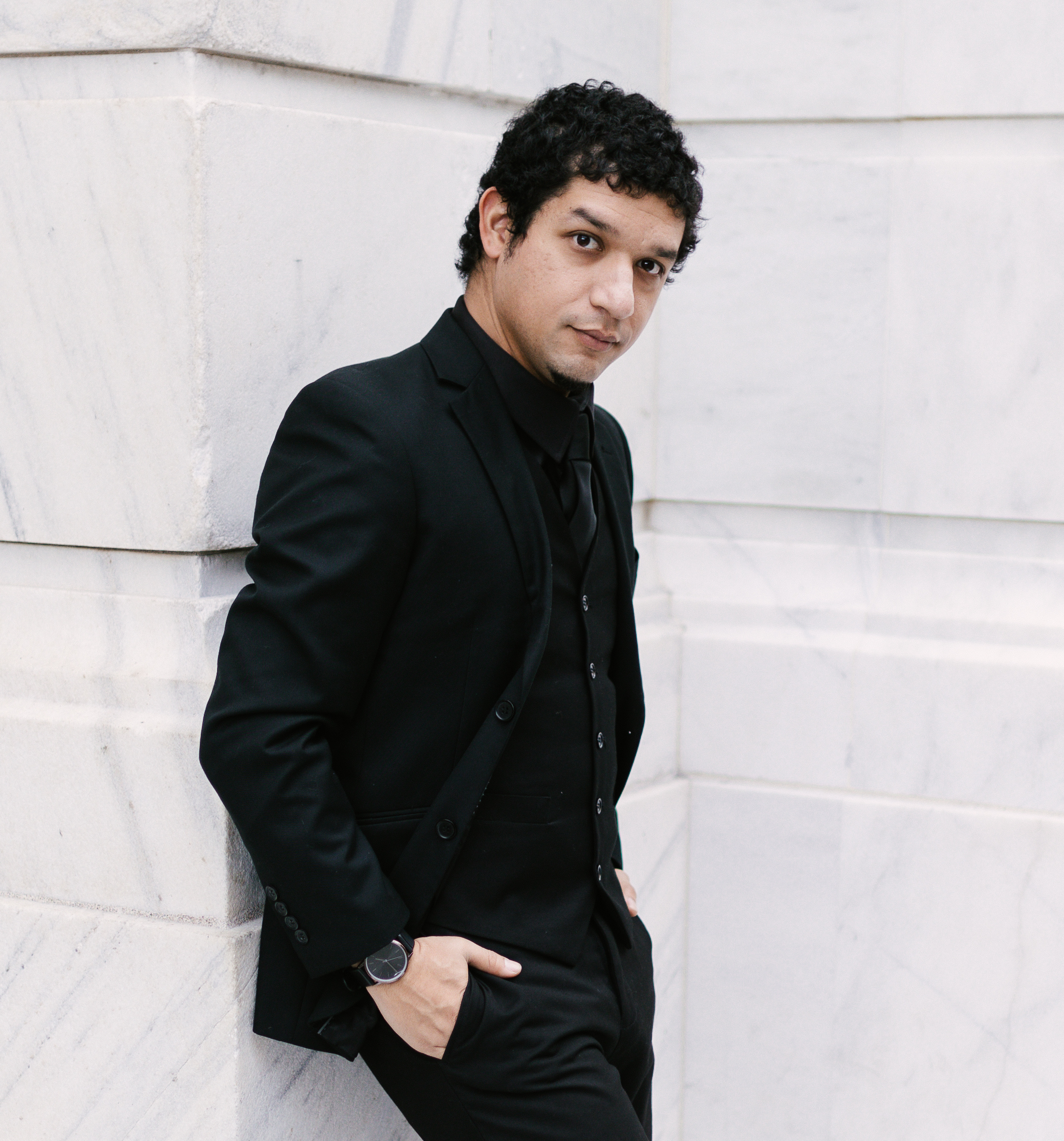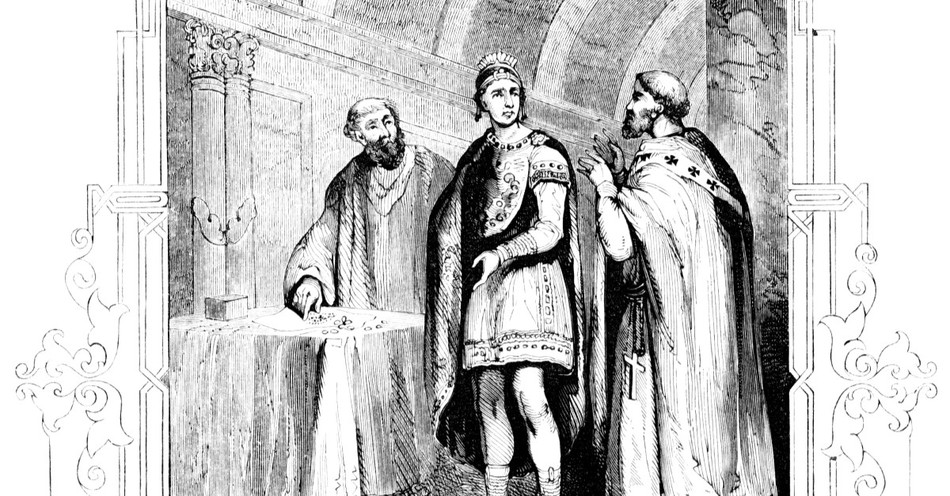Much can be said about one of history’s greatest Roman emperors. There’s a reason that Justinian I is also known as Justinian the Great.
While the Eastern Roman Empire (or Byzantium) lasted long after Justinian’s reign, he is one of its best-remembered leaders, both in the Julian Dynasty and the line of emperors. Some even argue that he is the best of all 93 emperors, including Emperor Constantine the Great himself (however you feel about that claim, I leave to you).
Let’s dive into how his accomplishments—as a warrior, supporter of Christianity, and sponsor of new laws—changed history.
Who Was Justinian?
Justinian was originally born Petrus Sabbatius in 483 AD in Tauresium Dardania (modern-day Macedonia). He later adopted the name Justinianus from his uncle, Emperor Justin I. Under the guidance and leadership of Justin I, Justinian received an excellent education and observed military command in Constantinople. Justinian would become a powerful adviser to his uncle and commanded one of the praesental armies.
As Justin I grew into elderly age, Justinian consumed power gradually. When Justin I passed in 527 AD, Justinian was crowned the next emperor and ruled until 565 AD. Shortly before his reign, Justinian married Theodora, who became his close companion as a spouse and a trusted advisor in his inner circle.
During his reign, Byzantium would expand its borders, beliefs, and culture further than it ever would again.
What Was the Eastern Roman Empire that Justinian Ruled?
To understand Justinian I’s rule of Eastern Rome, some historical context must be given.
From 27 BC to 286 AD, Rome remained intact but went through different forms of government—a monarchy, a republic, then an empire. Emperor Diocletian split the empire in 286 AD along cultural lines: the Latins to the West, and the Greeks to the East. They became known as the Western and Eastern Roman Empires, each ruled by a different emperor.
Twenty-seven years later, in 313 AD, Constantine the Great ended persecuting Christians and adopted Christianity as the official state religion. Constantine ruled from a city within the Eastern Roman Empire called Constantinople, which made him its first emperor. Over time, it became known as Byzantium or the Byzantine Empire.
While the Eastern Roman Empire evolved into a unique kingdom, invasions by Germanic tribes like the Visigoths caused the Western Roman Empire’s territory to shrink slowly. The city of Rome fell in 476 AD, and the tribes (better known as the barbarians) divided the Western territories into various kingdoms. Despite these dark times, many of the Visigoths converted to the Christian faith. Both the Western and Eastern Roman Empires followed the Bishop of Rome (better known as the Pope), until the Great Schism of 1054. After the Great Schism, most churches in Byzantium became what we now call the Orthodox Church.
When Rome fell, Byzantine saw itself as the continuation of the Roman Empire that had to take the responsibility to regain and reconquer Rome’s former territories. Here is where Justinian I steps into the story: a large portion of the former Roman territories would be reconquered under his reign.
Before reconquering Western Roman territory, there was a score to settle with the Sassanian Empire in the east. Under Justinian’s reign and top-tier generals like Flavius Belisarius, Byzantine lands were kept safe from Sasanian advances, later called the Iberian war (527 AD—531 AD). After the Battle of Dara in 530 AD, a major battle that resulted in Byzantine victory, the two rivals signed a peace treaty. Justinian turned his sights to the former Western Roman territories.
The various kingdoms of the former Western Roman Empire were experiencing a volatile time. They frequently fought each other, and many Christian residents (particularly in the Vandal kingdom of North Africa) were being persecuted again. Justinian took advantage of these skirmishes and launched his offensive in North Africa in 533 AD. In roughly a year, North Africa was under Byzantine rule.
In Italy, Ostrogoth Theodoric ruled as an independent country. Ostrogoth followed Arianism–a Christian heresy that denied Christ’s divinity. In his later years, he persecuted Catholic Christians. Under Justinian I, war raged against the Ostrogoths in 533 AD, lasting nearly 20 years. Through Justinian’s leadership and his generals’ work, Byzantium won the war in 554 AD.
While Justinian’s war campaigns brought major victories, life in Byzantium was far from stable. Various riots and skirmishes broke out—most notably the Nika Revolt, which saw great monumental structures damaged or burnt, including Hagia Sophia and the Augustium.
Amidst these dark moments, Justinian’s rule witnessed some great improvements. One of these was Justinian’s law reforms with the help of Byzantine jurist and advisor, Tribonian. Their combined work created a new legal code, the Justinian Code, which began in 527 AD. These laws would lead to a crackdown on corruption and new tax laws. More volumes were added to the code over time, with the final volume completed the year of Justinian’s death in 565 AD. Today, our civil law foundations can trace their influence back to the Justinian Code.
What Impact Did Justinian Have on the Church?
Justinian left a magnificent impact on the church. Under his rule, schools following pagan teaching and practices were closed, while various churches were built. Justinian would have various church leaders travel through his empire to bring Christianity among pagan groups. Most notable was John the Bishop of Ephesus, known to have brought over 70,000 pagans to Christianity in Asia Minor (modern-day Turkey).
As previously mentioned, Justinian oversaw the construction of multiple Churches throughout his empire. The most notable and well-recognized church to this day is Hagia Sophia in Constantinople. Before being remodeled as a Muslim Mosque in the Ottoman invasion in 1453, Hagia Sophia was one of the largest churches ever constructed under Justinian. Others included St. Catherine’s Monastery in Sanai, one of the oldest and longest continuing monasteries in all of Christendom to this day.
He also instituted changes to Christian doctrines when he oversaw the Fifth Ecumenical Council, otherwise known as the Second Council of Constantinople (553 AD). In the prior council, the Council of Chalcedon (451 AD), a debate about Christ’s nature emerged. The council agreed that Christ had two natures—he was fully God and fully human. The Fifth Ecumenical Council cemented this doctrine while dealing with various heresies which had appeared or re-emerged (such as Nestorianism, Monophysitism, and Origenism). To this day, Christianity’s high church denominations (notably Roman Catholics, Anglican Catholics, and the Eastern Orthodox) still hold to the Second Council of Constantinople. You can read more details about the Second Council of Constantinople’s discussions below in Dan Graves’ article.
Despite these victories, empire expansion, and cultural influence, it was not to last. Prior the Black Death of the Middle Ages, the original Bubonic Plague struck Europe in 541 AD. Also known as the Justinian Plague, the empire began to show cracks as it spread throughout the lands. From trade ships to warships, the plague spread, resulting in thousands upon thousands to perish, most notably, 230,000 lives in Constantinople, according to early historians. Justinian himself would catch the plague the same year, resulting in his wife Theodora taking the reign of the empire temporarily. The result of his absence was the rise of Monophysite heresy, Ostrogoth raids, and Persian advances. Justinian returned in 542 AD to an empire in jeopardy both financially, militarily, and religiously.
The results led to a high financial crisis as wars continued, specifically in the west. Meanwhile, the religious controversy with the Monophysite heresy led to a 5th Ecumenical Council (more on that later). To top it off, the plague continued, crippling the empire more and more. This also resulted in cities becoming less populated, which led to declining education, literature, and art. While these matters were settled as best they could, they interfered with Justinian’s plans to further expand both Christianity and the Empire’s borders. To make matters worse, the death of Theodora in 545 AD delivered a crushing blow. Not only was she his wife, but also his most trusted counsel advisor.
Towards the end of his life, Byzantine forces in Italy finally overcame the Ostrogoths. A truce with Persia brought stability for a short time. Justinian withdrew from public affairs to focus on settling theological matters in the empire. There was concern regarding a heresy he nearly adopted known as Apthtartodocetism (the belief that Christ was divine but his body was naturally incorruptible). This matter would soon drop, for in 565 AD, Justinian would pass away due to age and sickness.
The expansion and lasting legacy Justinian left on history and the church is a significant one. Never before had the Roman Empire been so close to reclaiming its former might, influence, and size. Never again would it be able to do so. While there were a number of contributing successors in the Byzantine Emperor line, the empire would slowly but surely fall into decline forthe next millenia. The reasons for this include but are not limited to: the rise of Islam in the east, the return of the plague, the Great Schism of 1054, the Crusades, and the sack of Constantinople in 1453 which ended Byzantium altogether.
Bibliography
1. Treadgold, Warren, A Concise History of Byzantium. (Palegrave, 2001).
2. Harris, Jonathan. Constantinople: Capital of Byzantium. (Contiuum, 2007).
3. Bp. Kallistos Ware. The Orthodox Church. (Penguin Books, 2015).
To read more about Justinian’s contributions to Chistian tradition, read the article below
2nd Council of Constantinople
Dan Graves, MSL
Controversy over the God-man nature of Christ disturbed both church and empire throughout the fourth, fifth and sixth centuries. Theological quarrels became party politics and several church-wide or “general” councils met to resolve the issues. The first of these councils, the famous Nicea Council, denounced Arianism, a teaching that Christ was a created being. The three councils that followed took up other aspects of the relationship between Christ’s divinity and humanity. But heresies continued to spring up like weeds, as they still do today. On this day, May 5, 553, Emperor Justinian convoked a fifth general council, the second to be held at Constantinople.
Emperor Justinian was a vigorous ruler. Unfortunately, he thought the only way his empire could enjoy unity was to compel religious uniformity. Consequently, he closed heathen schools and baptized pagans by force. He all but wiped out the Montanists in fierce persecution. (The Montanists believed in ecstatic spiritual experiences and end-of-the-world prophecies.) Justinian also built church sanctuaries, including the breathtaking Hagia Sophia (Holy Wisdom).
Empress Theodora favored the monophysite views taught by Eutyches the Archmandrite (an archmandrite was the head of a monastery or several monasteries). Monophysites deny that Christ had both a divine nature and human nature. Eutyches’ form of monophysitism held that Christ’s two natures, the Divine and the human, united so completely that they became physically one, with the Divine absorbing the human. Its theological rival was Nestorianism, which was said to overemphasize the distinctions between Christ’s two natures. Under Theodora’s influence, Justinian called the council to condemn writings that supported Nestorianism—the Three Chapters.
The Three Chapters had already been dealt with in the important Council of Chalcedon. The writings were rebuked but the writers were not condemned. Apparently, the monophysites hoped by re-opening the issue to win condemnation of the three writers. In so doing, they would discredit the Council of Chalcedon by making its judgments appear incomplete or inadequate, creating an opening for further Monophysite advances.
The council opened on this day, May 5, 553. In eight sessions, it upheld Chalcedon on the two natures of Christ, but condemned “those who say that there are two Sons and two Christs. For one is he who is preached by us and you, as we have said, Christ, the Son and Lord, only begotten as man, according to the saying of the most learned Paul.” They condemned the writings but spared the reputation of two of the three writers of the Three Chapters.
Pope Vigilius swayed back and forth on the issues. Although he refused to attend the council, he was at a disadvantage, because Justinian would not let him return to Rome unless he subscribed to the council’s findings. Vigilius capitulated, putting himself at odds with his own previous writings and possibly even with the council of Chalcedon. A western synod excommunicated him and he had to change his position again before the western church would accept him back.
Bibliography:
1. Jedin, Hubert. Ecumenical Councils of the Catholic Church. (Herder and Herder, 1960).
2. Raab, Clement. The Twenty Ecumenical Councils of the Catholic Church. Westminster, Maryland: Newman Press, 1959.
3. Shahan, Thomas J. “Second Council of Constantinople.” Catholic Encyclopedia. New York: Robert Appleton, 1914.
4. “Three Chapters” and “Vigilius.” The Oxford Dictionary of the Christian Church, edited by F. L. Cross and E. A. Livingstone. Oxford, 1997.
(“2nd Council of Constantinople” by Dan Graves MSL was first published on Christianity.com on April 28, 2010).
Photo Credit: Getty Images/Christine_Kohler

This article is part of our People of Christianity catalog that features the stories, meaning, and significance of well-known people from the Bible and history. Here are some of the most popular articles for knowing important figures in Christianity:
How Did the Apostle Paul Die?
Who are the Nicolaitans in Revelation?
Who Was Deborah in the Bible?
Who Was Moses in the Bible?
King Solomon's Story in the Bible
Who Was Lot's Wife in the Bible?
Who Was Jezebel in the Bible?
Who Was the Prodigal Son?




